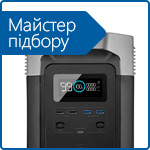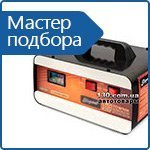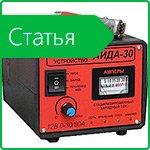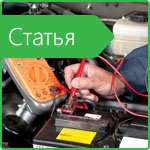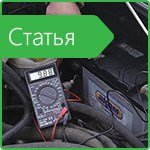How to charge a calcium battery and which charger?
Today, many modern cars use the so-called "calcium batteries", which are designated "Ca-Ca", or simply "Ca". These are modern batteries that have improved performance, but they have some differences from their older comrades (hybrid and antimony batteries). And it is the charging of these types of batteries that is particularly different, that is, it happens differently and the usual cycle that is used in “old” batteries will not work! And the calcium battery charger also needs a special one.
From the beginning of the article it is clear that at the moment there are 3 ways by which batteries are manufactured (except for gel, AGM and others):
- Antimony
- Calcium
- Hybrid
Each of the above methods is different from the other impurities in the plates. The antimony batteries add a chemical element antimony (metal) in very small volumes, calcium has calcium and some silver, and a hybrid battery includes calcium, antimony, and sometimes even silver.
When should I charge the battery?
It’s best to charge a car battery a couple of times a month, regardless of the season. Summer or winter-any period is difficult for a battery.
But you shouldn’t recklessly charge, it’s important to understand at what point it’s worth charging the battery. There are several ways to check:
First of all, in any battery, you need to measure the voltage at the battery terminals. The normal battery voltage is 12.7 V (100% charge). If the voltage is 11.7 V and below, then the battery almost completely sat down. A voltage of 12.2 speaks of a discharge in half. In this case, you need to urgently recharge, otherwise the process of sulphation of the plates will begin.
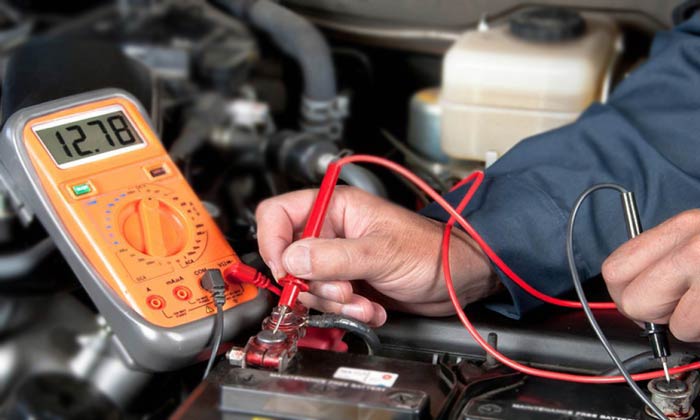
With a battery serviced, the process is greatly simplified. In this case, you need to have a "hydrometer", which measures the density of the electrolyte. The density should be within 1.27 g/cm ³. In the case when the value is lower, the battery should also be recharged.
Well, and probably the simplest-if the battery can not scroll through the engine, first you need to try to charge it.
Whatever it is, there are no perfect batteries, it is advisable to follow it, at least once a month. This will significantly prolong its life.
Standard Charging
If you take "antimony" and "hybrid" batteries, they are charged in the usual way. That is, charging occurs with a current that is 10 percent of the capacity (60 A/h requires 6 A) and a voltage of 13.8-14.5 V. If the charge current drops, it means the battery is charged. With the battery serviced, you can unscrew the plugs and see if the bubbles are on top.
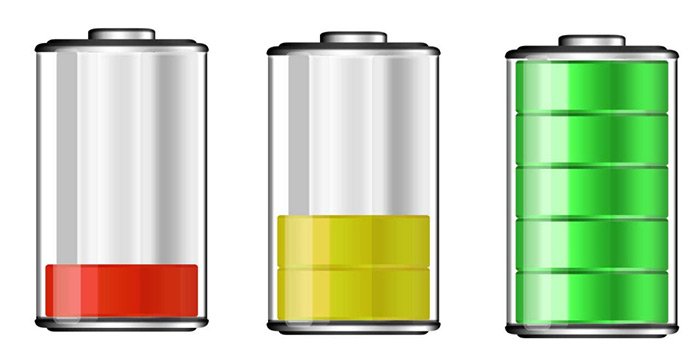
As for charging time, it can be different. A few hours will be enough for recharging, and many set the current to 2 A, and leave the device on all night. Full charging with a minimum current can last several days. Buy a charger for a car battery in Kiev, Odessa, Kharkov, as well as delivery in Ukraine at 130.com .ua.
Calcium Battery and its features
This technology has many advantages, such as high startup current, good capacity, low self-discharge, and others. And they are low-maintenance, that is, they practically do not evaporate the electrolyte. There are also disadvantages-poor resistance to large discharges (if you discharge completely 3-4 times, the capacity will drop by several times), a large cost, and you still need to be able to charge them correctly.
Calcium battery is made for people who do not understand what to do in the engine compartment and do not look there for months. The case of such a battery is impenetrable, the electrolyte does not evaporate, which means that the device can work for years.
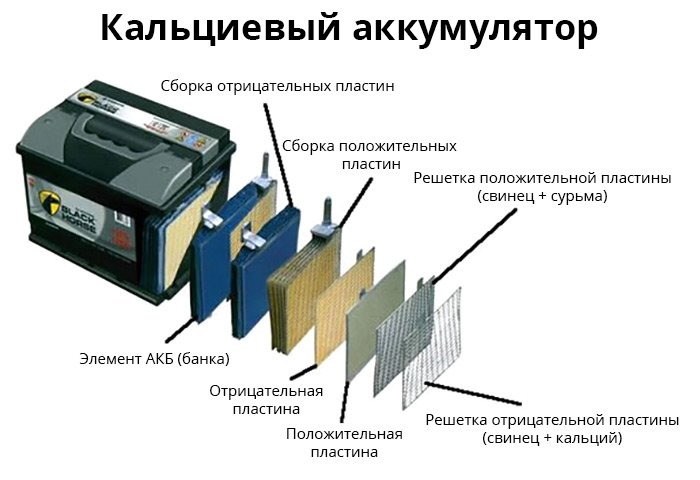
But the problem is that in our conditions, transport is used in a wide range of temperatures — low temperatures in winter lead to undercharging of the battery, and the electrolyte can still get away from high temperatures with the help of a high-pressure valve, which is available in all maintenance-free models. Therefore, it is important to understand-whether it is calcium or any other battery, it is important to monitor it once a month, and even more often.
But more often than not, practice shows that they only look at a battery when there are already problems, for example, the voltage drops to 11.8 V, which is almost a full charge. That is, the “calcium burner” needs to be recharged to reach 12.7 V; a conventional charger cannot. Why is that?
Calcium Battery Charging
The problem is that a special battery charger is needed for a calcium battery, Master is ideal Watt BOT-30 with artificial intelligence. Also, this charger should produce a charge voltage of 16.1-16.5 V. In this case, you can charge the battery "CA", "CA/CA" up to 100 percent. If your charger is capable of delivering a maximum voltage of 14.8 V, and then the electronics are disconnected, then the battery will fill up by only 45 to 50 percent, if there is a 15.5 V limit, then 70 to 80. Such indicators will never help to achieve electrolyte density at 1.27 g/cm³
Therefore, first of all, you need to find a charge that can produce a voltage of 16.1-16.5 V. Conventional devices cannot do this.
At this stage, you may have a question, if such a large voltage is needed for charging, how does the generator handle this?
Indeed, the generators of even the cars of the last years of production do not give more than 15 V, but in practice the generator simply does not allow such a battery to discharge.
How to charge a calcium battery with Master Watt BOT-30

The BOT-30 charger charges all types of 12 and 24 V lead-acid batteries and desulfates batteries with liquid electrolyte. This also applies to calcium batteries.
Operation Modes
In all modes, the cooling fan can rotate at a variable speed.
DIAGNOSTICS
Turns on at the start of any mode. RFP determines the state of the battery and charge voltage. At the same time, the “12V”, “24V”, and “Storage” indicators flash in turn. The duration of this mode is 8 seconds.
SUMMER/GEL
Can be used without disconnecting the battery from the car.
The mode is intended for:
Charging gel (Gel) battery;
Charging starters with liquid electrolyte at an ambient temperature above 10 ° C;
Car engine start at ambient temperature above 10 ° С;
This mode is divided into 3 stages. The number and duration of the stages depend on the initial state of the battery and its behavior during charging.
When the battery is charged at about 70%, the “12V” or “24V” and “Storage” indicators light in turn. It also means that the battery is ready to start the engine. With a normal end of the mode, an automatic transition to dynamic storage occurs. while the “12V” or “24V” indicator goes out and the “Storage” indicator lights up. If at some stage of this mode the indication “Failure” appears, then this battery has an internal damage (most often a short circuit in at least one bank) or is missing.
WINTER/AGM
Can be used without disconnecting the battery from the car.
The mode is intended for:
Charging the battery type AGM;
Charging starters with liquid electrolyte at ambient temperatures below 10 ° C;
Auto start engine at ambient temperature below 10 ° C .; This mode is similar to the previous one.
When the battery is charged at about 70%, the “12V” or “24V” and “Storage” indicators shine in turn. It also means that the battery is ready to start the engine. With a normal end of the mode, an automatic transition to dynamic storage occurs. At the same time, the “12V” or “24V” indicator goes out and the “Storage” indicator lights up.
“STEELING DESULFATATION”
Only for starter batteries, remove from the car.
This mode is designed to restore starter batteries with liquid electrolyte. The mode includes many stages that are performed by several algorithms: a small current charge, a constant current charge, a pulsed charge, and others. With a normal end of the mode, an automatic transition to dynamic storage occurs. the “Work” indicator goes out and the “Storage” indicator lights up. ATTENTION! This mode cannot be used for gel and AGM batteries.
Storage
“Storage” consists of battery charge and rest cycles. Such an algorithm protects against sulphation and corrosion of the plates. Battery diagnostics in this mode is absent. "Storage" is ideal for working in a buffer mode (for example, in an uninterruptible power supply system) or for long-term storage of batteries. The duration of the mode in time is not limited. This mode is activated automatically after a normal (non-emergency) termination of other modes or can be called up within 8 seconds after switching on the RFP, bypassing other modes, as follows:
On the power supply disconnected from the mains and the battery, set the mode “DESULPTION Starter”;
Connect the charger to the battery and turn on the 220V network;
During the flashing of the “Emergency”, “12V or 24V”, “Storage” indicators (the first 8 seconds after switching on), transfer the ZP to the “Winter/AGM” mode-to work with the AGM or Summer/GEL batteries "- to work with the battery type" GEL ". When the RFP is operating in this mode, the “Storage” indicator is constantly on.
BOT-30 Charger Modes
| Maximum charge voltage | 12 V | 24 V |
| LIT/GEL mode | 14.4 | 28.8 |
| Winter/AGM mode | 14.9 | 29.8 |
| Desulfate mode. starter " | 16.2 | 32.4 |
As can be seen from the table, in order to start charging the calcium battery, you must use the desulphation mode. This mode involves charging a large voltage, but a small current. Before you turn on the mode “desulfate. starter ", it is necessary to remove the battery from the car. If the charger is connected to other devices (UPS, inverter ...), it is necessary to disconnect it. After selecting the capacity of the connected battery and mode, charging will start automatically.
















